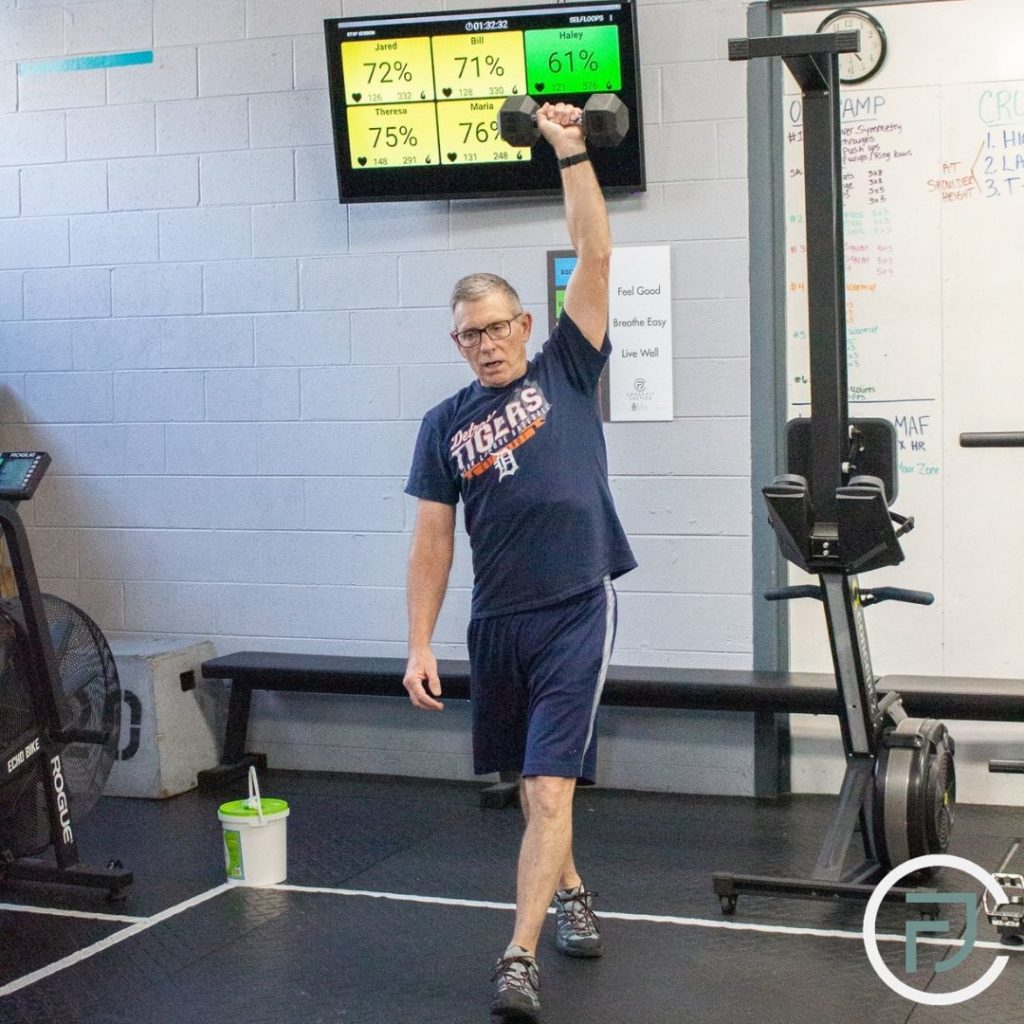Like any good training program, Ticker has the ability to show improvement overtime. Arguably, there are more ways to show improvement with Ticker Training than most fitness programs. Don’t believe us…then keep reading for the details.
The simplest way to tell if you’ve gotten more fit with Ticker is through a PNOE Test. This test requires an Echo Bike. The participant starts biking very slowly with the PNOE Anabolic Testing Unit on & gradually “ramps up” the test. They begin slow, burning fat as a fuel source & gradually get faster to more of a carbohydrate burning pace. If the athlete can burn more fat at a higher heart-rate than the previous test, they show a positive adaptation. Simple, but not easy.
If you do not have access to, nor wish to take a PNOE Test then an athlete can pay attention to their heart-rate in class. They view the monitor & note how high their heart-rate gets doing a particular activity, let’s say rowing & jumping rope. The goal would be for the row to be the easier of the two efforts while the jumping rope would make the hr spike a bit. When back on the rower the hr should come back down or “recover.” Over time one would hope to increase their rowing speed & still be able to recover or possibly do more reps of jumping rope before their hr “spiked.” This would show a positive adaptation with both the rowing & jumping rope.
In terms of lifting weights one would pay attention to how much he or she could lift & stay in the appropriate zone. Over time we’d look to see if the athlete could lift more weight during a metcon, stay in the designated hr zone & recover faster. The adaptations that associate themselves with weighted movements often take the most time to improve, but it can be done. It simply takes patience.
Improving the heart-rate in a class setting is admirable & often the preferred method of adaptation. It’s the fun part. However, we must not fail to recognize where the heart-rate is during the beginning of class, right when the athlete puts the monitor on.
We all carry stress from our day, some more than others. The monitor, for better or for worse, displays that stress. This is where we can have conversations about lifestyle stress & help our athletes out of the gym, as well as in it. Overtime we can see how low our athlete’s daily hr can get. To us, seeing a low hr at the beginning of class is a huge win. It means the athlete is less stressed through their day. Our program has made them anti-fragile & stronger to handle the stresses of their life. Their heart does not react to the negative stimulus like it used to.
Any & all stress manifests itself as a higher heart-rate. Unfortunately the body can not separate job stress from the stress created due to lack of sleep or a poor diet. It is up to the coach to help their athletes in all areas of health & wellness, not just the gym Ticker Training helps the coaches at CFJ breakdown those barriers & have real conversions that result in positive adaptations. We just do it one beat at a time.
Until next time, Ticker On!



